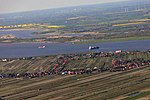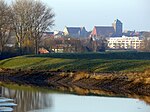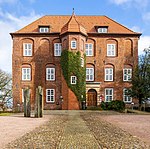Stade

Stade (German pronunciation: [ˈʃtaːdə]), officially the Hanseatic City of Stade (German: Hansestadt Stade, Low German: Hansestadt Stood) is a city in Lower Saxony in northern Germany. First mentioned in records in 934, it is the seat of the district (Landkreis) which bears its name. It is located roughly 45 km (28 mi) to the west of Hamburg and belongs to that city's wider metropolitan region. Within the area of the city are the urban districts of Bützfleth, Hagen, Haddorf and Wiepenkathen, each of which have a council (Ortsrat) of their own with some autonomous decision-making rights. Stade is located in the lower regions of the river Elbe. It is also on the German Timber-Frame Road.
Excerpt from the Wikipedia article Stade (License: CC BY-SA 3.0, Authors, Images).Stade
Emser Straße, Bad Ems-Nassau
Geographical coordinates (GPS) Address Nearby Places Show on map
Geographical coordinates (GPS)
| Latitude | Longitude |
|---|---|
| N 53.600833333333 ° | E 9.4763888888889 ° |
Address
Emser Straße
Emser Straße
56132 Bad Ems-Nassau
Rheinland-Pfalz, Deutschland
Open on Google Maps










